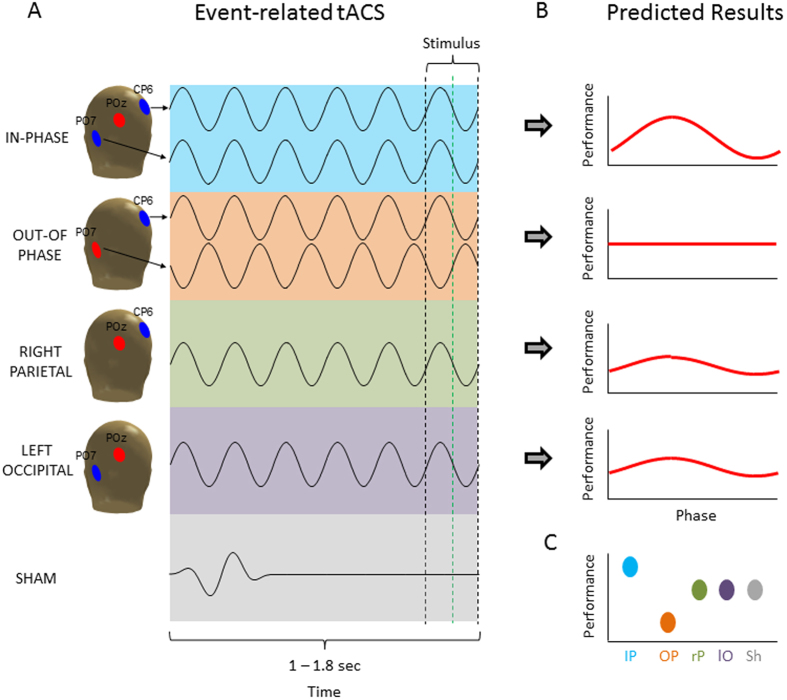Figure 2.
The five different tACS conditions are shown (A) together with the predicted results (B,C). (A) TACS was always delivered with a frequency of 7 Hz and an amplitude of 1 mA. The four active tACS conditions differed only in terms of which electrode locations were used for stimulation. Red electrodes positions indicate the reference electrode whereas blue electrodes indicate the stimulation electrode/s. For SHAM a short (~282 ms) 7 Hz sine wave was applied varying randomly between the four possible electrode combinations. The stimulus was presented at the end of stimulation at different phase angles. TACS was terminated at the earliest possible zero crossing occurring after stimulus onset (i.e. the green line for approx. half of the trials). This way the stimulus only overlapped for a maximal duration of 71 ms with tACS stimulation. (B) The predicted results in terms of phase modulation are shown. Strongest phase modulation was predicted for the IN-PHASE, weakest phase modulation was expected for the OUT-OF-PHASE modulation, with RIGHT-PARIETAL and LEFT-OCCIPITAL in between. (C) The predicted outcomes for general perception performance (i.e. independent of phase) are illustrated. The head drawings were obtained with the Fieldtrip toolbox (http://www.fieldtriptoolbox.org/).

